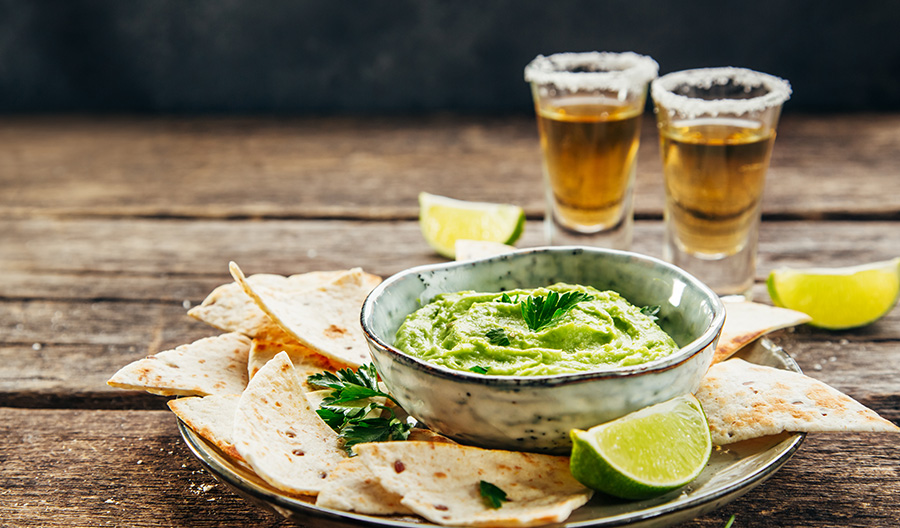There’s a whole industry dedicated to pairing the right wine with the right food. Spirits, however, are often overlooked in this country. Cocktails can be a fun way to incorporate liquor into a meal, but they present a challenge: A good cocktail should balance sweet, sour and bitter notes that don’t require an accompanying dish to reach equilibrium.
Spirit lovers might prefer to keep things simple and sip spirits neat with meals. It’s the norm all over the world—think ice-cold vodka in Russia, agave spirits in Mexico, aquavit in Scandinavia, shochu in Japan and arak in the Levant.
It’s best to start experimenting with clear spirits that see little or no barrel aging. The strength of their aromas and flavors are less assertive than, say, a smoky Scotch or a rich, aged rum, and you’ll find them more agreeable with a variety of dishes.
Tequila is full of floral, earthy and citrus nuances. The blanco style has a lot of spicy, herbaceous and savory characteristics that heighten accompanying flavors.
There is a cultural tradition of Tequila as part of the meal experience. In traditional family settings in Mexico, there’s always a bottle of Tequila on the table.
Ceviche is a natural pairing. You get fresh, fragrant agave flavors from the Tequila, and bright, herbal flavors from the ceviche. Because the raw fish is already marinated in lemon or lime juice, you won’t need a helping hand from citrus to chase your sips.

Arak, the traditional Lebanese spirit, has long been the drink of choice to accompany meze (small plates). Bold spices like za’atar, sumac and Aleppo pepper, and fresh herbs like cilantro, parsley and mint, can be tough to pair with wine. However, they’re easily offset by sips of this anise-flavored spirit.
It’s meant to be diluted, typically one-part spirit to two- or three-parts water. The result is a cloudy drink that’s smooth and deeply flavorful. It offers notes of aniseed, fennel or black licorice and a refreshing hint of peppermint.
The Lebanese table is made up of food that is acidic and flavorful, and arak helps break it up. It’s somewhere between wine and a cocktail. It certainly clears the palate between bites, but it doesn’t overpower.
Despite saké’s popularity in America, it’s shochu, a clear spirit, that’s big in Japan (second only to beer in consumption). Almost always, it’s served with a meal.
Unlike saké, which is brewed by fermenting rice, shochu is a single-distilled spirit made from a number of different base ingredients like rice, sweet potato or barley. Most hover around 20–35% alcohol by volume (abv), which makes it a suitable spirit to drink neat alongside food.
There are no hard and fast rules when it comes to pairing shochu, but some styles are better suited for certain dishes. The delicate, savory flavors of rice (kome) shochu are best with raw fish like sushi or sashimi. For grilled meats like yakitori chicken skewers, grilled fish or octopus, a richer barley (mugi) shochu is a better match.
No spirit is better served alongside food than aquavit, the Scandinavian staple flavored with caraway or dill. The traditional Danish lunch table serves clear aquavit chilled and neat, with a beer back alongside smorrebrød open-faced sandwiches and pickled herring. Bottles of aquavit also accompany the crayfish feast that’s part of the midsummer celebration in Sweden. In Norway, aquavit is a frequent companion to herring and cured fish.
The caraway flavor of aquavit goes with anything fermented, really any food with a vinegary quality or briny flavor.

